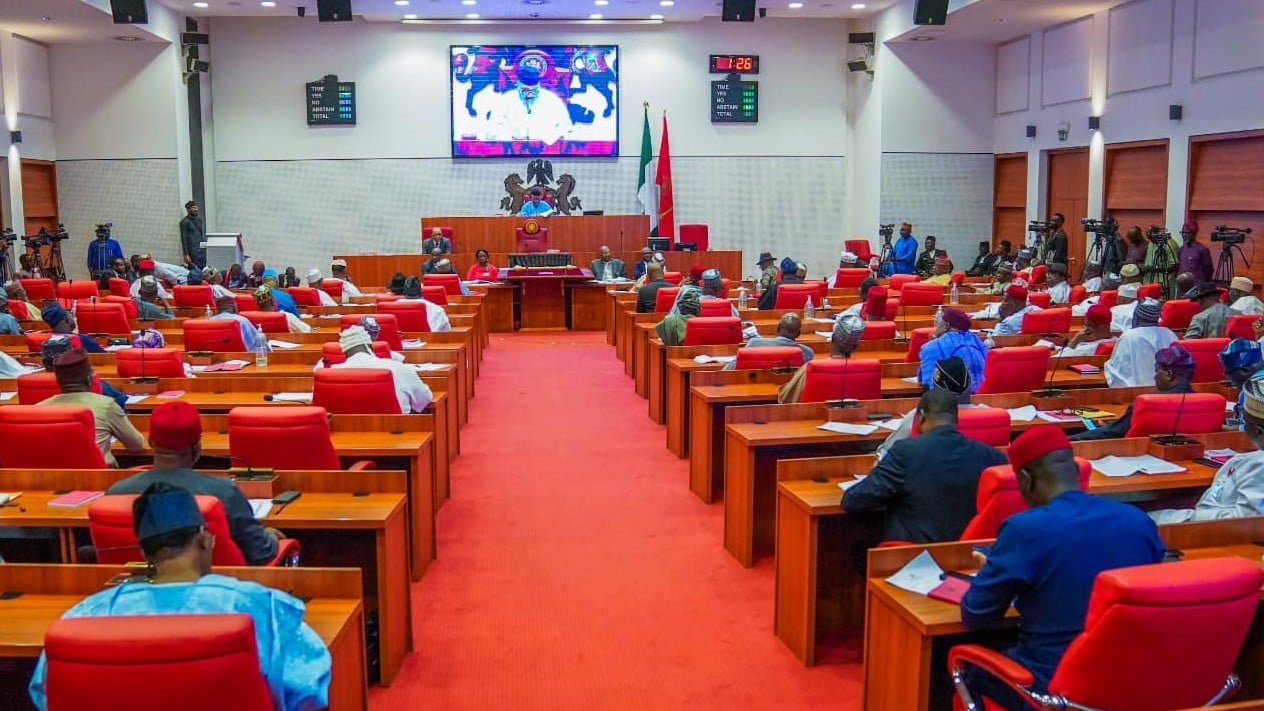File photo of applicants trying to submit their test questions to an immigration officer
The National Bureau of Statistics (NBS) says Nigeria’s youth unemployment increased to 7.2 percent in the second quarter (Q2) of 2023.
A youth is classified as anyone between the age of 15 to 24 years old, the NBS said in its Q2 labour force report.
“The Unemployment rate among youth aged (15-24 years) in Q2 2023 was 7.2% having been at 6.9% in Q1 2023,” the report reads.
The bureau said the unemployment rate in urban areas was 5.9 percent in Q2 2023, increasing from 5.4 percent in the previous quarter.
Advertisement
“The agency noted that “time-related underemployment in Q2 2023 was 11.8%”.
The NBS said the labour force participation rate was 80.4 percent in the quarter under review, an uptick from 79.9 percent in Q1 2023.
The participation rate among men in Q2 2023, according to the bureau, was 82.1 percent, while the rate for women stood at 78.8 percent.
Advertisement
“The participation rate was 78.4% in urban areas and 82.6% in rural areas,” the agency added.
UNEMPLOYMENT EDGES UP SLIGHTLY TO 4.2% IN Q2
Meanwhile, the unemployment rate for Q2 2023 was 4.2 percent, a marginal increase from 4.1 percent recorded in Q1 2023.
NBS defined the unemployment rate as the share of the labour force (the combination of unemployed and employed people) who are not employed but actively searching and are available for work.
Advertisement
“Unemployment rate by sex among men was 3.5% and among women was 5.9% in Q2 2023,” the NBS said.
“Disaggregation by location, the unemployment rate was 5.9% in urban areas and 2.5% in rural areas.
“Focusing on young people, the unemployment rate for 15-24-year-olds was 7.2% in Q2 2023.”
In terms of educational attainment, the NBS said the unemployment rate was 8.0 percent for those with post-secondary education; 5.4 percent for those with upper secondary education; and 3.7 percent for those with lower secondary education,
Advertisement
The agency also said the rate for those with primary education was 3 percent, while that of those with no formal education was 2.5 percent.
HOW THE EMPLOYMENT-TO-POPULATION RATIO CHANGED
Advertisement
The employment-to-population ratio is the proportion of the working-age population.
According to NBS, in Q2 2023, 77.1 percent of Nigeria’s working-age population was in employment.
Advertisement
Disaggregating by sex, the employment-to-population ratio was 79.3 percent for men and 74.9 percent for women respectively.
The employment-to-population ratio in urban areas
was 73.8 percent compared to 80.5 percent in rural areas.
Advertisement
Add a comment







